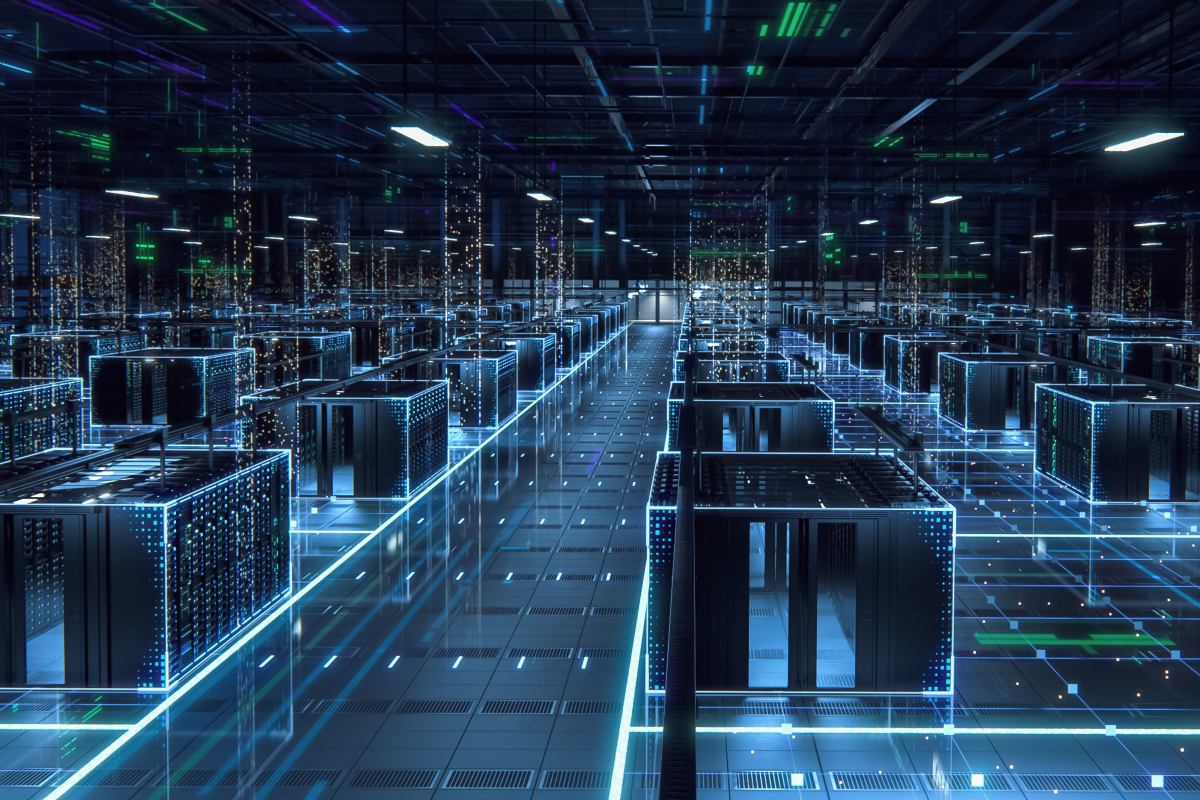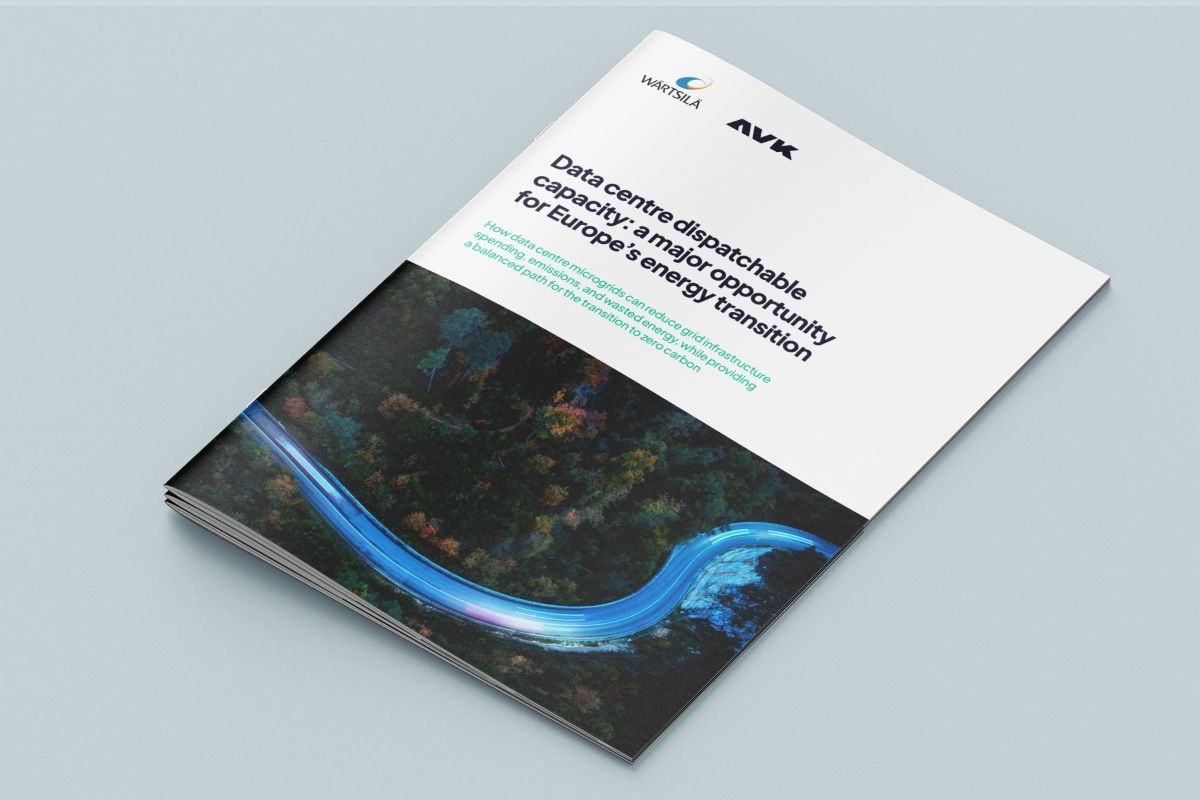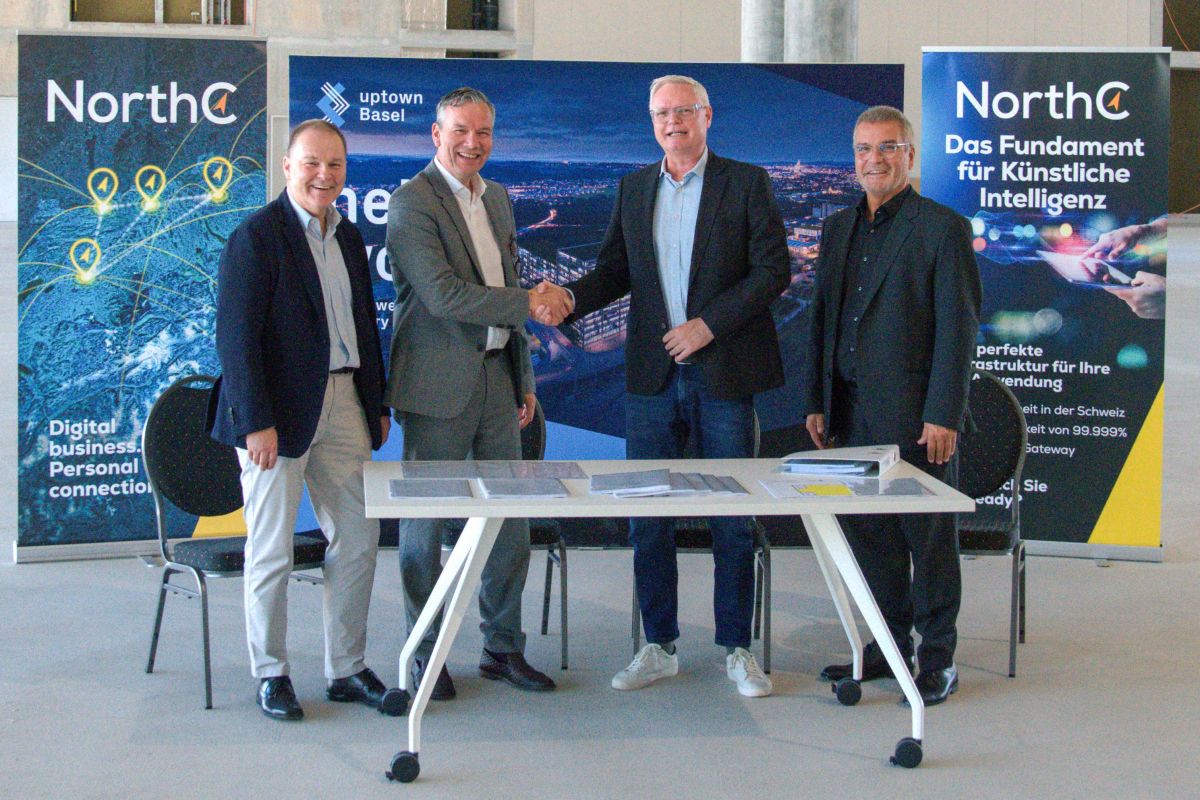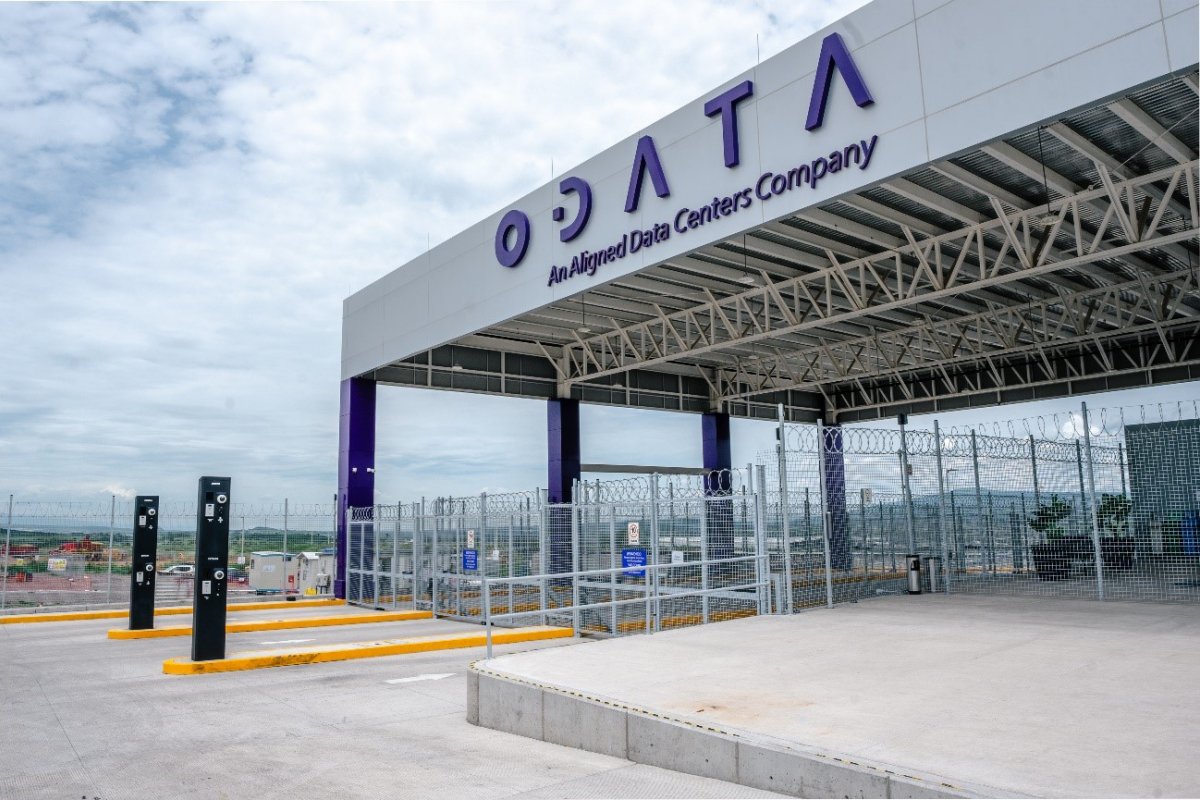Data Centre Build News & Insights
Artificial Intelligence in Data Centre Operations
Data Centre Build News & Insights
Data Centre Operations: Optimising Infrastructure for Performance and Reliability
Exploring Modern Data Centre Design
Schneider Electric unveils AI DC reference designs
Schneider Electric, a French multinational specialising in energy management and industrial automation, has announced new data centre reference designs developed with NVIDIA, aimed at supporting AI-ready infrastructure and easing deployment for operators.
The designs include integrated power management and liquid cooling controls, with compatibility for NVIDIA Mission Control, the company’s AI factory orchestration software. They also support deployment of NVIDIA GB300 NVL72 racks with densities of up to 142kW per rack.
Integrated power and cooling management
The first reference design provides a framework for combining power management and liquid cooling systems, including Motivair technologies. It is designed to work with NVIDIA Mission Control to help manage cluster and workload operations.
This design can also be used alongside Schneider Electric’s other data centre blueprints for NVIDIA Grace Blackwell systems, allowing operators to manage the power and liquid cooling requirements of accelerated computing clusters.
A second reference design sets out a framework for AI factories using NVIDIA GB300 NVL72 racks in a single data hall. It covers four technical areas: facility power, cooling, IT space, and lifecycle software, with versions available under both ANSI and IEC standards.
Deployment and performance focus
According to Schneider Electric, operators are facing significant challenges in deploying GPU-accelerated AI infrastructure at scale. Its designs are intended to speed up rollout and provide consistency across high-density deployments.
Jim Simonelli, Senior Vice President and Chief Technology Officer at Schneider Electric, says, “Schneider Electric is streamlining the process of designing, deploying, and operating advanced, AI infrastructure with its new reference designs.
"Our latest reference designs, featuring integrated power management and liquid cooling controls, are future-ready, scalable, and co-engineered with NVIDIA for real-world applications - enabling data centre operators to keep pace with surging demand for AI.”
Scott Wallace, Director of Data Centre Engineering at NVIDIA, adds, “We are entering a new era of accelerated computing, where integrated intelligence across power, cooling, and operations will redefine data centre architectures.
"With its latest controls reference design, Schneider Electric connects critical infrastructure data with NVIDIA Mission Control, delivering a rigorously validated blueprint that enables AI factory digital twins and empowers operators to optimise advanced accelerated computing infrastructure.”
Features of the controls reference design
The controls system links operational technology and IT infrastructure using a plug-and-play approach based on the MQTT protocol. It is designed to provide:
• Standardised publishing of power management and liquid cooling data for use by AI management software and enterprise systems• Management of redundancy across cooling and power distribution equipment, including coolant distribution units and remote power panels• Guidance on measuring AI rack power profiles, including peak power and quality monitoring
Reference design for NVIDIA GB300 NVL72
The NVIDIA GB300 NVL72 reference design supports clusters of up to 142kW per rack. A data hall based on this design can accommodate three clusters powered by up to 1,152 GPUs, using liquid-to-liquid coolant distribution units and high-temperature chillers.
The design incorporates Schneider Electric’s ETAP and EcoStruxure IT Design CFD models, enabling operators to create digital twins for testing and optimisation. It builds on earlier blueprints for the NVIDIA GB200 NVL72, reflecting Schneider Electric’s ongoing collaboration with NVIDIA.
The company now offers nine AI reference designs covering a range of scenarios, from prefabricated modules and retrofits to purpose-built facilities for NVIDIA GB200 and GB300 NVL72 clusters.
For more from Schneider Electric, click here.
Joe Peck - 19 September 2025
Data Centre Build News & Insights
Data Centres
News
Renewables and Energy: Infrastructure Builds Driving Sustainable Power
Microgrids are key to accelerating DC growth, research finds
A combination of renewables, grid balancing engines and energy storage make for the most cost-effective microgrids to power data centres, while also cutting emissions and providing vital grid balancing to enable the energy transition, according to a new research paper from technology group Wärtsilä and energy solutions business AVK.
The paper, Data centre dispatchable capacity: a major opportunity for Europe’s energy transition, provides new analysis on how data centre microgrids can reduce grid infrastructure spending, emissions and wasted energy, while providing a balanced path for the energy transition.The analysis finds that powering the data centres across Europe by optimised microgrids could create a significant bank of dispatchable power, supporting the entire continent’s energy transition.
The rapid growth of AI is driving increased demand for data centres across Europe, which is expected to increase by 250% by 2030, from 10GW to 35GW. With the continent’s grid facing constraints from high energy prices and bloated grid connection queues, data centre operators are increasingly turning to off-grid solutions to power these energy-intensive assets.
Anders Lindberg, President of Wärtsilä Energy and Executive Vice President of Wärtsilä, says, “The growth of AI over recent years has been extraordinary, and as it continues to transform the way we live and work, it drives a need for more energy. This is causing significant challenges for grid operators across Europe, who are struggling with rising costs and up to a 10-year waiting time for a grid connection.
“By investing in microgrids, data centres can sidestep energy constraints, and with the right technology mix of renewables, grid balancing engines and energy storage, can ensure their emissions profiles and costs do not outweigh the huge benefits that AI brings.
AVK CEO Ben Pritchard comments, “The answer to the challenges we face in combatting climate change is as much to do with changing behaviours as developing new technologies. And the key to behavioural change is the recognition that there are different ways of doing things. The solutions outlined in this paper are not impractical; they are based on real-world cases and calculations. All that’s needed to make them more widespread is for investors, operators, equipment suppliers, planners, policy makers to recognise the widespread benefits that sharing dispatchable data centre capacity with the grid can bring and pass that knowledge on.”
In addition to benefits created by microgrids, engine power plants bring cost efficiencies to data centre power generation. Modelling an 80MW data centre, a combination of engine power plants, renewables, and energy storage provides the lowest levelised cost of electricity – at 108 EUR/MWh – in comparison to three other real-world scenarios. It also offers a low emissions scenario in comparison to the other modelled scenarios, and particularly in comparison to gas turbines. The emissions of engine power plants can also decrease as sustainable fuels become commercially available.
“Through investing in flexibility, microgrids can have the lowest possible cost, while cutting emissions dramatically compared to other pathways including turbines. This flexibility can have a significant, positive impact on the continent’s digital and energy transition,” Anders Lindberg states.
On current trajectories, 40% of existing AI data centres will be operationally constrained by power availability by 2027. Microgrids can take this new strain off the grid in the short term and when grid connection is achieved, excess energy generated can be sold. As well as furthering cost reductions for data centre operators, this can provide vital flexibility to Europe's power challenges.
Read the new research paper by clicking here.
For more from AVK, click here.
Simon Rowley - 16 September 2025
Data Centre Build News & Insights
Data Centres
News
Quantum Computing: Infrastructure Builds, Deployment & Innovation
Quantum-AI data centre opens in New York City
Oxford Quantum Circuits (OQC) and Digital Realty today announced the launch of the first Quantum-AI Data Centre in New York City, located at Digital Realty’s JFK10 facility and built with NVIDIA GH200 Grace Hopper Superchips.
- Quantum-AI Data Centre: OQC and Digital Realty are working with NVIDIA to integrate superconducting quantum computers and AI supercomputing under one roof, creating a data centre built for the Quantum-AI era.
- Landmark deployment and integration: OQC’s GENESIS quantum computer will integrate NVIDIA Grace Hopper Superchips to become the first-ever quantum computing system deployed in New York City. OQC plans to integrate its quantum hardware with NVIDIA accelerated computing to support the scalability of future systems.
- Quantum-AI at scale: Embedded within Digital Realty’s global platform, PlatformDIGITAL, OQC is delivering secure, interconnected Quantum-AI infrastructure to power breakthroughs from Wall Street to Security – a central pillar of the UK–US tech trade Partnership to be announced.The Quantum-AI Data Centre brings together OQC’s quantum computing, NVIDIA accelerated AI hardware, and Digital Realty’s cutting-edge global infrastructure, eliminating geographical and infrastructure barriers to enable businesses to harness the power of quantum compute and AI. This initiative allows enterprises to access an integrated environment where quantum computing powers the AI revolution: enabling faster model training, more efficient data generation, and transformative applications in finance and security.
The system features OQC GENESIS, a logical-era quantum computer, installed within Digital Realty’s secure JFK10 site – the first-ever quantum computer installed within a New York City data centre. Integrated with NVIDIA Grace Hopper Superchips, the platform provides a launchpad for hybrid workloads and enterprise adoption at scale. OQC expects that future GENESIS systems will ship with NVIDIA accelerated computing as standard, building on its earlier collaboration integrating the NVIDIA CUDA-Q platform and providing developers seamless tools to build hybrid quantum-AI applications.
“This Quantum-AI Data Centre demonstrates how quantum can drive the AI revolution - securely, practically, and at scale - while strengthening the UK–US technology alliance.” says Gerald Mullally, CEO of OQC. “Leveraging Digital Realty’s infrastructure and NVIDIA supercomputing, we are redefining enterprise computing for finance and security.”
“Digital Realty’s mission has always been to enable the world’s most innovative technologies by providing secure, interconnected infrastructure at global scale,” adds Andy Power, President & CEO of Digital Realty. “By working with OQC, we’re using NVIDIA supercomputing to make Quantum-AI directly accessible in one of the world’s most important data hubs - empowering enterprises and governments to unlock new levels of performance and resilience.”
Science Minister Patrick Vallance comments, “Quantum computing could transform everything - from speeding up drug discovery to supercharging clean energy so we can cut bills. The economic prize is enormous, with £212 billion expected to flow into the UK economy by 2045 and tens of thousands of high-skilled jobs on offer. OQC’s launch of the first quantum computer in New York City showcases British tech excellence and strengthens our transatlantic ties. And the industry’s first quantum-AI data centre will put British innovation at the heart of next-gen computing - delivering speed, scale and security to tackle problems today’s tech is yet to grasp."
Applications and impact
By integrating quantum computing with NVIDIA AI supercomputing inside a secure enterprise-grade data centre, OQC and Digital Realty are creating a platform that will unlock new possibilities across critical sectors:
Finance: Faster and more accurate risk modelling, portfolio optimisation, fraud detection, and derivatives pricing, delivering competitive advantage in the world’s most data-intensive markets.
Security: Advanced material simulation, logistics optimisation, and decision-making under uncertainty, strengthening resilience in mission-critical domains.
Quantum for AI: Quantum computing will unlock new frontiers for AI itself, from accelerating model training and efficient data generation to emerging quantum machine learning applications with transformative impact across industries.
“This milestone shows the strength of a British tech leader scaling globally through international collaboration,” says Jack Boyer, Chair of OQC. “Working with Digital Realty and using NVIDIA supercomputing here in the United States, OQC demonstrates how the UK and US can lead together in the responsible deployment of frontier technologies for finance and security”
“The UK–US technology alliance is vital to ensuring that powerful new capabilities like quantum computing protect our nations, improve our prosperity, and are developed securely and in line with democratic values,” remarks Sir Jeremy Fleming, OQC Board member and former Director of GCHQ. “This deployment combines British innovation and American infrastructure, and brings NVIDIA’s AI leadership to deliver trusted computing power for the most critical applications.”
Proven technology and roadmap
OQC is reportedly the only quantum computing company with live deployments into colocated data centres: OQC already has systems operating in London and Tokyo, and now in New York. Its patented dual-rail Dimon qubit technology represents a breakthrough in error suppression, reducing the hardware overheads needed for error-corrected qubits and accelerating the path to fault-tolerant quantum computing. OQC has set a market leading roadmap – in collaboration with Digital Realty – to deliver scalable, commercially viable systems, with near-term impact in finance, defence, and AI. As a British champion of quantum computing, OQC is committed to building systems that drive both commercial advantage and national resilience.
For more from Digital Realty, click here.
Simon Rowley - 16 September 2025
Data Centre Build News & Insights
Data Centre Projects: Infrastructure Builds, Innovations & Updates
News
NorthC to build new data centre at uptownBasel campus
NorthC, a Dutch provider of sustainable data centre and colocation services, has signed an agreement to develop a regional data centre at the uptownBasel Innovation Campus in Arlesheim, Switzerland.
The project expands NorthC’s existing collaboration with uptownBasel and will deliver a facility designed to support advanced technologies such as artificial intelligence, quantum computing, diagnostics, and personalised medicine.
Construction is scheduled to begin around 18 months after planning approval, with operations expected to start by mid-2027.
Sustainable design and regional focus
In its first phase, the facility will cover 2,500 m² and provide 6 MVA of power capacity. It will be powered entirely by renewable energy, with backup systems running on green diesel, part of NorthC’s goal to achieve climate neutrality by 2030.
The centre will also incorporate waste heat reuse for residential heating.
Hans-Jörg Fankhauser, founder of uptownBasel, says, “With NorthC, we have a partner that shares our vision, one that understands the potential of operating a data centre on a globally recognised innovation campus.”
Fankhauser adds that uptownBasel aims to be “a platform for leading networks in medical technology, quantum computing, artificial intelligence, and the future of work. We aim to attract startups and talent to Arlesheim early on in their journey.”
NorthC already operates two facilities in nearby Münchenstein and says the new site will strengthen its role as an infrastructure provider for MedTech, Industry 4.0, and AI in the Basel region. With this development, the company will operate five data centres in Switzerland.
Alexandra Schless, CEO of NorthC Group, comments, “We are very pleased to deepen our partnership with uptownBasel. The construction of this data centre underscores our continued commitment to Switzerland as a strategic location and reflects our belief in innovation and the future.”
For more from NorthC, click here.
Joe Peck - 11 September 2025
Data Centre Build News & Insights
News
Quantum Computing: Infrastructure Builds, Deployment & Innovation
Quantum-ready FN-DSA (FIPS 206) nears draft approval
NIST has submitted the draft standard for FN-DSA (FIPS 206), the FALCON-based digital signature scheme, moving it closer to formal adoption as part of the post-quantum cryptography (PQC) standardisation process.
FN-DSA was selected alongside ML-DSA and SLH-DSA for PQC standardisation, but its approval has taken longer due to mathematical complexity and refinements to its components. With the draft now submitted, the first release is imminent.
The draft will be published as an Initial Public Draft (IPD) for open review. While the timeline has not been finalised, it may coincide with the NIST PQC Standardisation Conference in September 2025.
Based on past schedules, the review period is expected to last around one year, with a final standard likely in late 2026 or early 2027.
Industry preparations
Companies such as DigiCert, a US-based digital security company, are preparing for FN-DSA’s rollout. To avoid confusion around naming and identifiers, DigiCert has stated it will not implement FN-DSA in production until the standard is finalised.
In the meantime, the company will make the IPD version available for experimentation through DigiCert Labs, which already hosts FALCON for testing. This will enable the wider community to trial the draft standard before formal approval.
Role in post-quantum cryptography
FN-DSA is seen as a special purpose scheme rather than a replacement for ML-DSA. Its smaller signature sizes could reduce certificate chain lengths, which is valuable in environments where efficiency is a priority.
However, due to the complexity of FALCON’s signing process, FN-DSA is less suited for frequently signed leaf certificates. Instead, it is expected to be more useful for root and intermediate certificates.
NIST has also signalled potential adjustments to signing and sampling methods, which could broaden FN-DSA’s applications once the draft specification is published.
The progress of FN-DSA marks another milestone in the move towards quantum-safe standards. Organisations are being encouraged to begin preparation now by testing draft algorithms, trialling implementations, and developing crypto-agility strategies to ensure a smooth transition as PQC standards are finalised.
For more from DigiCert, click here.
Joe Peck - 8 September 2025
Commercial Real Estate: Property Developments, Trends & Infrastructure
Data Centre Build News & Insights
Data Centre Business News and Industry Trends
Data Centre Projects: Infrastructure Builds, Innovations & Updates
News
Zoho to open new UK data centre
Zoho, a provider of cloud-based business software and productivity tools, has announced it will open a new UK data centre in the first quarter of 2026. The announcement comes alongside 43% growth in the UK and a tripling of staff numbers over the past two years.
The new facility will allow customers to retain data within the UK, addressing demand for greater data sovereignty, particularly in sectors such as financial services and the public sector. The company will also relocate its UK office from Bletchley to Milton Keynes in the same quarter to support further team expansion.
Strengthening UK operations and compliance
Zoho’s UK strategy is built around its Transnational Localism programme, which provides local teams to support customer needs and contribute to self-reliant regional economies. The latest growth expands its customer-facing staff across sales, support, and marketing.
Sachin Agrawal, UK Managing Director of Zoho, says, "In a constantly moving landscape impacted by geopolitical tensions and economic instability we are focusing deeply on enhancing the customer experience we provide to our UK customer base.
"We understand the shift to customers wanting to host their data within the boundaries of the UK, which is particularly important in industries such as the public sector and financial services. Data privacy and protection continue to be at the core of our operations and is enhanced further with our new data centre.
"Investment in our new office space enables us to continue to strengthen our growing team, ensuring that we not only deliver the best software, but the best service and support from those with excellent local knowledge of the market."
At its Zoholics Birmingham event, Zoho also confirmed new compliance features for UK customers. Zoho Books is now recognised by HMRC for Making Tax Digital (MTD) for Income Tax Self Assessment (ITSA), adding to its existing approval for VAT. From April 2026, this regulation will apply to sole traders with qualifying income above £50,000 and from April 2027 to those above £30,000.
Joe Peck - 8 September 2025
Data Centre Architecture Insights & Best Practices
Data Centre Build News & Insights
Data Centre Projects: Infrastructure Builds, Innovations & Updates
News
Pelagos planning ambitious 250MW facility in Gibraltar
Pelagos Data Centres, a developer of large-scale data centre infrastructure, has announced plans to build a major new data centre near the Port of Gibraltar, with capacity of up to 250MW by 2033.
Unveiled at a launch event at the offices of Gibraltar’s Chief Minister, Fabian Picardo, the project represents an investment of around £1.8 billion. It is the largest development currently planned in the territory by value, and among the largest in its history.
The facility will be built in five phases on a 20,000m² site. The first stage is scheduled to be operational in late 2027, with later phases delivered at intervals of around 18 months.
Transforming Gibraltar’s digital landscape
Funded entirely by private investment and backed by the Government of Gibraltar, the project is positioned as a step forward for the territory’s digital and economic development. It is intended to help meet Europe’s growing demand for data centre capacity, particularly as AI adoption accelerates across industries.
The site will operate independently of Gibraltar’s existing power grid and include a public leisure facility as part of the development.
Konstantin Sokolov, Chairman of Pelagos Data Centres, comments, "The scale of this project marks a new chapter for Gibraltar and for Europe's digital capabilities.
"Just as electricity and the internet transformed society in the past, AI is now emerging as the defining technology of our time with the power to redefine entire industries, economies, and communities.
"With our new facility, Pelagos Data Centres is laying the foundation for the next era of AI-driven innovation, positioning Gibraltar as a strategic hub and enabling Europe's brightest minds to unlock the full potential of this revolutionary technology."
Chief Minister Fabian Picardo adds, "I am delighted that Pelagos Data Centres have decided that Gibraltar is the place to establish their first facility and that the whole community will benefit from their massive investment and its huge economic impact.
"I look forward to this project becoming a reality as soon as possible."
Jobs, efficiency, and sustainability
The development is expected to create up to 500 jobs during construction and around 100 permanent positions once operational. Pelagos currently employs 50 full-time staff across London and Gibraltar, and plans to expand its local workforce significantly.
The facility will be built to Tier III standards, carrier-neutral, and designed to serve both public and private sector clients. It will pursue international certifications covering information security, quality, sustainability, and energy management, with a targeted Power Usage Effectiveness (PUE) of 1.2 or better.
The project’s sustainability strategy includes powering operations with a combination of renewable energy and liquefied natural gas (LNG), with the aim of achieving net-zero operational emissions by 2030.
Cooling systems will be designed to minimise water use, and the company is exploring heat recovery options to support community projects.
Sir Joe Bossano, Minister for Economic Development and Inward Investment, says, "This is the most significant infrastructure investment in Gibraltar since the early 1990s, when the GSLP Government brought state-of-the-art telecommunications as inward investment from the United States and made possible the creation of a centre for online services. Then, we future-proofed Gibraltar's economy. Today, we are doing so again.
"The technology of the future - on which every advanced economy will depend - will be artificial intelligence. AI requires data, processing power, and energy resources on a scale never before seen.
"The Ministry for Economic Development will put all its resources at the service of this initiative to ensure that it is delivered in the shortest possible time. In this field, speed of delivery is everything. Gibraltar should be the fastest jurisdiction on the planet when it comes to delivery."
A further technical briefing and press conference is planned for the first quarter of 2026, ahead of construction beginning later that year.
Joe Peck - 5 September 2025
Data Centre Build News & Insights
Data Centre Business News and Industry Trends
Data Centre Projects: Infrastructure Builds, Innovations & Updates
Insights into Data Centre Investment & Market Growth
ODATA secures $1.02bn green financing for data centres
ODATA, a Latin American data centre provider and part of Aligned Data Centers, has secured $1.02 billion (£757 million) in green financing to support sustainable data centre infrastructure across Latin America.
It is the largest financing of its kind in the region’s data centre sector, bringing ODATA’s total funding to $2.25 billion (£1.67 billion).
The financing will be directed towards projects that meet sustainability benchmarks, including renewable energy use, improved efficiency, and responsible construction practices.
Supporting sustainable growth in Latin America
"This historic achievement, representing the largest issuance of sustainable data centre financing in Latin America, has allowed ODATA to build a solid financial structure," says Rafael Bomeny, CFO of ODATA. "With these high-quality resources, we're incredibly well-positioned to empower our customers in their digital infrastructure expansion across the region.
"This green financing also reinforces our mission to contribute to Latin America's sustainable development by leading the way in adopting innovative technologies that drive a more efficient future for our customers and communities."
Funding has been provided by a syndicate of international banks, including Apterra, BNP Paribas, Crédit Agricole CIB, Deutsche Bank, MUFG Bank, Natixis, Nomura, Société Générale, and SMBC.
The new investment will support projects in Brazil, Mexico, Chile, and Colombia, strengthening ODATA’s position in the regional market and enabling cloud and AI infrastructure growth.
Innovation and energy strategy
"Sustainability is a top priority for ODATA," Rafael continues. "In addition to major investments in renewable energy, we adopt designs that seek the highest levels of energy efficiency without wasting water.
"With this new green financing, we can continue contributing to the development of Latin America’s digital infrastructure while upholding the highest standards of sustainability."
ODATA is the first hyperscale data centre operator in Latin America to self-produce 100% renewable energy in Brazil.
The company has also introduced the Delta Cube (Delta³) air-cooling system, developed by Aligned Data Centers, which supports high-density power loads of up to 50kW per rack and can integrate with liquid cooling technologies.
For more from ODATA, click here.
Joe Peck - 5 September 2025
Commercial Real Estate: Property Developments, Trends & Infrastructure
Data Centre Build News & Insights
Data Centre Business News and Industry Trends
Data Centre Projects: Infrastructure Builds, Innovations & Updates
8x8 opens new data centre in France
Cloud communications provider 8x8 has opened a new data centre in France to meet growing demand for in-country data hosting and regulatory compliance.
The facility is designed to support France’s data sovereignty and residency requirements, including GDPR and local hosting mandates. It also seeks to provide low-latency access and enterprise-grade reliability for businesses and public sector organisations.
Expansion in the French market
The announcement follows a year of growth for 8x8 in France. The company appointed Christian Laloy as Country Lead, strengthened its collaboration with IT services group SCC, and formed a partnership with the French trade association for customer relations (AFRC).
“While others choose to operate remotely, we’re investing locally,” says Christian Laloy, Country Manager, France at 8x8. “Some providers choose not to locate in France and, in my mind, that shows a lack of respect for the local businesses, the local people, and the culture.
"This new data centre makes our position clear: 8x8 is committed to serving French organisations with secure and fully compliant technology and transparency.”
Supporting regulated industries
The new site is part of 8x8’s wider strategy to serve regulated and security-conscious sectors. By storing data in-country and complying with European requirements, the company aims to increase trust amongst French customers.
“8x8 isn't just entering the market with an innovative approach; by locating its data centres in France, the company helps deliver its customers a high level of data sovereignty, in line with European regulatory requirements,” claims Regis Davesne, Director of SCC France.
“This choice significantly boosts confidence and makes a real difference for customers looking for a solid, reliable long-term partner.”
The French opening is one of several European investments planned for 2025 as 8x8 expands across markets where compliance and security are key considerations.
Joe Peck - 3 September 2025
Data Centre Build News & Insights
Data Centre Business News and Industry Trends
Insights into Data Centre Investment & Market Growth
News
Renewables and Energy: Infrastructure Builds Driving Sustainable Power
Inspired, VIRTUS sign wind-powered tri-party CPPA
Inspired, a UK commercial energy and sustainability advisory firm, has announced the signing of a tri-party corporate power purchase agreement (CPPA) with VIRTUS Data Centres, a UK data centre provider, and Lynn and Inner Dowsing (LID) windfarms.
VIRTUS has subscribed to a combined power purchase agreement (PPA) totalling 31MW of wind power, representing 16% of the total generation from Lynn and Inner Dowsing (LID) offshore windfarms, with a commencement date of 1 October 2025. This agreement seeks to ensure a long-term supply of renewable energy.
The agreement
A CPPA is a long-term energy contract between a corporate customer and a renewable power generator/developer. They are becoming an increasingly popular choice for companies wanting to reach net zero as they offer up to 100% renewable power.
Having a CPPA means the energy businesses use can be traced back to a specific renewable energy project, such as a wind or solar farm, which feeds an equivalent amount of power into the grid.
David Cockshott, Chief Commercial Officer at Inspired, says, “Inspired has been proud to partner with VIRTUS as their dedicated energy consultant. We are excited to continue supporting their sustainable journey and to commence this tri-party agreement, which allows renewable power to flow directly to their data centres.”
Helen Kinsman, SVP Commercial and Regulatory Affairs at VIRTUS, adds, “As an energy intensive user, we know it’s our responsibility to minimise the environmental impact from all our data centre facilities. Hence, since going live with our first site in 2011, we have been procuring power from 100% renewable sources.
"We are committed to delivering reliable, resilient, and responsible digital infrastructure to our customers and operate the gold standard in sustainable data centres in the UK and Europe.”
The renewable power will be delivered by Lynn and Inner Dowsing (LID) offshore windfarms, owned by funds managed by Macquarie Asset Management. Macquarie Asset Management is supported by XceCo, a UK asset management company specialising in the full project life cycle of renewable energy ventures.
The offshore wind farms are located 5km off the east coast of England, by the town of Skegness in Lincolnshire.
Bailey Bradley, Managing Director and co-founder XceCo, comments, “The successful delivery of this CPPA for one of our offshore wind farm assets under management stands as a testament to the exceptional collaboration between XceCo and all stakeholders involved in delivering this transaction.
"The commercial complexities involved in delivering this CPPA have proven to be a great experience. Through painstaking efforts, continuous multi-party engagements, a shared vision, and unwavering commitment, we turned a complex challenge into a powerful achievement, generating success together."
Inspired also provide a variety of additional services to VIRTUS as their dedicated energy and sustainability consultant.
For more from VIRTUS, click here.
Joe Peck - 2 September 2025

Head office & Accounts:
Suite 14, 6-8 Revenge Road, Lordswood
Kent ME5 8UD
T: +44 (0)1634 673163
F: +44 (0)1634 673173









